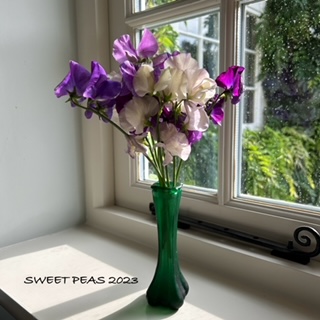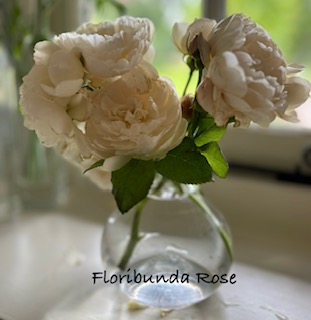- Screen Colours:
- Normal
- Black & Yellow
- Horticulture
GETTING READY FOR THE SHOW FEBRUARY SUGGESTIONS
-
Order Dahlia tubers. In the show the Dahlias are the only category of flower that has its own cup - The David Webb Memorial Trophy. The criteria for entering is five blooms in one or more colour but with no buds. They can be arranged in a vase of your choice.
-
Cut back perennials. The definition of a perennial plant is that they live for two years or more. Their Latin name means ‘through the years’. Strictly speaking trees and shrubs are perennials too but the name seems to be more commonly associated with plants. At a slightly later date we will explain more about the perennial categories in the show.
-
Keep mulching the flower and vegetable beds with compost or well rotted manure. It really does help produce healthier more robust plants down the line.
-
At this time of year you can find bare rooted shrubs, trees and hedging for sale so it is the ideal time to buy as they are much cheaper than ones that are grown in pots. Planting should be done when the ground isn’t frozen.
-
 Sow sweet peas under cover. They will germinate in an unheated greenhouse, cold frame or windowsill. Sow in 9cm pots (3 to a pot) or in root trainers using good quality, preferably peat free, slightly dampened compost. Push each seed in 2-3cm below the surface.
Sow sweet peas under cover. They will germinate in an unheated greenhouse, cold frame or windowsill. Sow in 9cm pots (3 to a pot) or in root trainers using good quality, preferably peat free, slightly dampened compost. Push each seed in 2-3cm below the surface. -
Trim repeat flowering roses. Cut away anything dead, damaged or diseased and remove any stems that are crossing or rub together. On well established plants, to stop overcrowding and to open up the centre of the bush, remove one or two of the older stems. Cut back the remaining stems by up to half or up to two thirds on hybrids and floribunda types. Snip off any stems that look weak or too thin to support a flower. Below I have tried to list a simple description of the different classes of rose. In the show there are categories for Floribunda and Hybrid Tea.
CLASSES OF ROSES
 Floribunda- ideal for bedding and garden displays due to the abundance of blooms and length of the blooming season. Floribunda roses produce trusses of perhaps 12 blooms which open at varying times. They can be grown as standards or bushes.
Floribunda- ideal for bedding and garden displays due to the abundance of blooms and length of the blooming season. Floribunda roses produce trusses of perhaps 12 blooms which open at varying times. They can be grown as standards or bushes.
Hybrid Tea- these have long stems and a well shaped bloom borne singly or with one or two side buds. They generally tend to bloom less frequently than Floribundas.
Miniature- these are replicas of bush roses but scaled down so can be planted in pots or more confined spaces like a patio.
Ramblers- are an older predecessor of the modern rose as they can be traced back to Victorian times. They produce an abundance of blooms but only flower once. They are usually very robust and can climb to great heights so are ideal for scrabbling through trees or even as ground cover. Some specimens can reach in excess of 30 feet. Blooms are borne on new wood so ideally the old wood should be cut out- easier said than done if the rose has rambled 30ft up a tree!
Climbers- tend to have stiffer stems than ramblers and produce larger flowers. Most climbers are repeat flowering. They are less vigorous on the whole.
Shrub- these tend to be larger than both Hybrid Tea or Floribundas. There are many varieties that are divided up into those that bloom only once and ones that repeat flower.
Other than ramblers almost all roses will repeat flower if dead headed regularly but the profusion and scent of blooms can vary hugely.
SOME POPULAR PLANTS, SHRUBS & TREES THAT FLOWER IN FEBRUARY
• Camellia japonica
• Cyclamen coum
• Daphne x transatlantica ‘Eternal Fragrance’
• Eranthis hyemalis- Winter Aconite
• Galanthus nivalis- Snowdrops
• Hellebores
• Jasmine nudiflorum
• Prunus x subhirtella- Winter-flowering Cherry • Viburnum tinus
Culinary
-
February is the last month you will find Seville oranges in the shops for marmalade. These are considered the best for the job as they have a thick layer of pith which, because of its high levels of pectin, makes for a better set.
-
Chutneys can be made at any time of the year but for entry to the show it has to be at least 3 months old. The ingredients for both chutneys and jams can be shop bought and both should keep well until the show if made now. Chutney is much simpler to make than jam as a setting point doesn’t have to be reached. Below is a very simple recipe for apple chutney. However there are countless other fruits or vegetables that could be added to it as a variation on a theme! Cranberries, grapes, mango, walnuts, tomatoes and plums to name but a few.
Simple Apple Chutney
1.5kg cooking apples, peeled and diced 750g light muscovado sugar
500g raisins
2x medium onions, finely chopped2 tsp mustard
2 tsp ground ginger I tsp salt
700ml cider vinegarCombine all the ingredients in a large, heavy saucepan. Bring the mixture to the boil over a medium heat, then simmer uncovered, stirring frequently, for 30-40 minutes, or until thick and pulpy. Remove from the heat and leave to cool. Transfer to sterilised, clean, dry jars and seal with a clean lid. If wanting to enter it for the show, please remember to use a plain jar with no manufacturer’s name on it, eg Kilner or Bonne Maman, not less than 12oz in size and with a new plain lid. Label and date it clearly on the side of the jar.